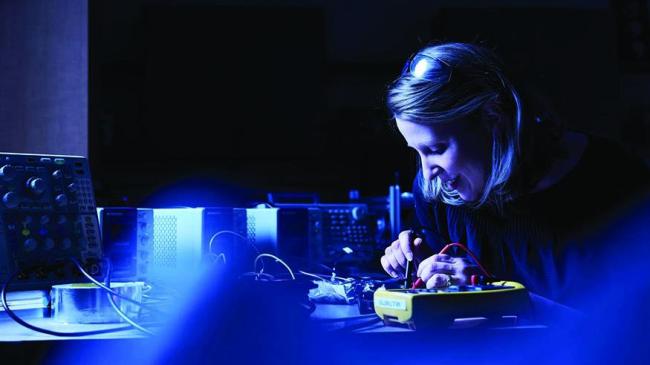
Students engage passions in summer research projects
At Augustana College, summer isn't just a break from classes — it's a perfect time for cutting-edge research and academic exploration.
Augustana offers a new minor in astronomy based in the Department of Physics, Engineering and Astronomy. Here you are part of a 50-plus-year history of exploring space at a college known for strong science programs with a liberal arts foundation, and a culture of support for research and adventure.
Research and adventure are at the heart of study in astronomy. At Augustana, students minoring in astronomy learn using resources that link our campus to the American west, and to the far reaches of space.

Graduate spotlight: A life of exploration for physicist Dr. Karen Andeen '03, associate professor of physics at Marquette University, has taken her from Augustana to Antarctica to beyond the Milky Way—and into the depths of cultural change for her field. → MORE

The John Deere Planetarium and Carl Gamble Observatory features a Celestron C14 computer-driven 14-inch reflector telescope. Stargazing, educational programs and planet viewing are offered to the community as well as campus. → MORE

At Augustana College, summer isn't just a break from classes — it's a perfect time for cutting-edge research and academic exploration.

The new NSF grant builds on the success of the MoNA Collaboration to involve undergraduate students in research over the years, resulting in numerous publications and presentations by students.

Augustana physics faculty are finding ways to involve students in quantum research and discovery, while moving ahead with their own research.